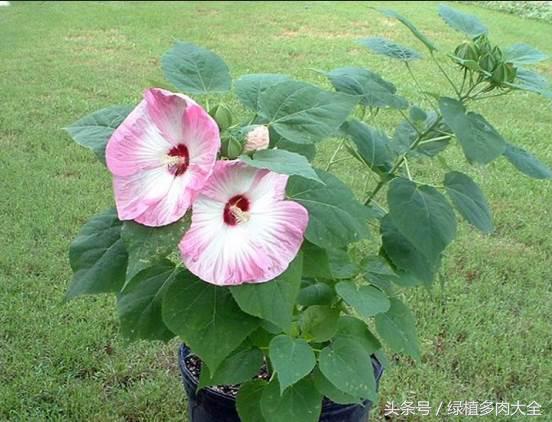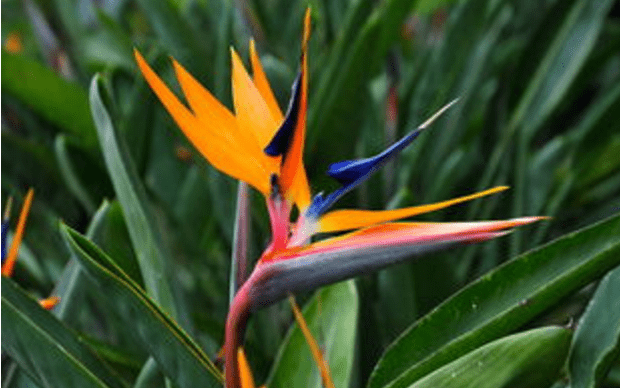How to cut hibiscus at home
Experience: hibiscus can be propagated by cuttings or water roots, and the success rate of the former is higher than that of the latter.
Propagating new plants with cuttings is a cheap way to get new plants. Stem propagation is suitable for most woody ornamental plants (including hibiscus shrubs). Although litchi can also take root in ordinary water, the use of soil or soilless medium can make hibiscus rooting more successful.

Hibiscus
Hibiscus plants have two growth forms: annual and perennial. These flowering plants grow to different mature sizes according to the species. Most plants grow between 0.6 and 2.4 meters to mature. As the number of years increases, these plants gradually grow into a circle. Hibiscus comes in a variety of colors, such as red, pink and yellow. Hibiscus plants usually reproduce by forming seeds in their natural environment. A method of breeding by asexual reproduction, including rooting or implanting parts of its stems and branches into roots.
Shavings
Spring is a better time to cut hibiscus plants. Cork shavings contain newly grown parts, which are a little soft but easily broken. Choose to include older, harder growing semi-hardwood inserts, but these inserts grow more slowly than cork inserts. Cork cutting preferably has larger leaves near the lower stem and new smaller leaves along the top. Look for new buds, which are as thick as pencils and at least 12.7 cm to 15.2 cm long.
Aquatic root
Nutrient cutting requires a moist environment to provide moisture to stems and leaves when new roots begin to form. Although cuttings in a cup of water are effective for some plants, such as basil, mint, ivy and mullet, most plants need to add culture media to their stems. The use of rooting medium can promote the growth of healthier roots during wood cutting.
Rooting medium
Loose porous soil or soilless medium that supports fertilizer cutting and provides water and air to promote better growth. Mix a piece of peat with three pieces of sand to form a suitable medium. The leaves under the hibiscus cuttings were stripped and inserted into the culture medium. For about five weeks, keep the soil slightly moist and prepare to be transplanted into large outdoor or indoor flowerpots.
What are the common diseases and insect pests of hibiscus and how to raise them?
Hibiscus is also often called kapok. This is a good pot decoration plant in the house. Because it has a strong absorption effect on many harmful gases such as sulfur dioxide, more waste gas is often produced in some sewage treatment plants or plants. Plant more; at the same time, hibiscus is also a plant that is more vulnerable to diseases and insect pests. So what are the most vulnerable to worms and how to prevent them?
1. Scarab
Beetles can be described as one of the insects that haunt many plants. Usually, when hibiscus is attacked by beetles, it always eats important parts such as branches and buds of plants. The result may lead to abnormal growth of hibiscus, which will become smaller and catastrophic.
If hibiscus is slightly damaged by the beetle, you can drive away the insects manually or make some repairs to the soil near the raft, because the larvae of the beetle are often in the raft soil; if attacked by the beetle, this is even more serious. When you can choose to spray a certain concentration of flower protection god solution, it can have a good effect on beetles, at the same time, proper pruning of hibiscus branches can also play a good control role.
two。 Brown spot disease
Pupa brown spot is relatively less common, but if it is infected with brown spot, it is more harmful to leaves. The leaves begin to look incomplete, the edges become dark brown, and gradually spread to the entire leaf, and in severe cases, the back of the leaf is also affected.
For the treatment of brown spot, plants can change slightly in terms of fertilization. A certain amount of organic fertilizer and more potash and phosphate fertilizer should be added to the fertilizer. At the same time, the diseased and residual leaves on the plant should be cut in time. If it is found, it will be cut off together; if it is found to be more serious, it should be repaired by spraying a solution of 40-60% carbendazim, usually every 7-10 days for a month. Considerable changes can be made from left to right.
3. Aphids
Aphids are bitter to hibiscus and the most common pests of hibiscus. When the disease occurs, the leaves and branches of hibiscus will be seriously affected, resulting in hibiscus not blooming as planned, and there may be other diseases, so solving mites is a very serious problem.
In order to control locusts, everyone needs to be careful. The leaves should be checked regularly. If the color of leaves or branches begins to show signs of yellowing, special attention should be paid as it may be infected by mites. The better way to deal with mites is to use pesticides directly. It can be killed by 50% flower protection or carbendazim solution, and then the effect can be achieved.
4. Raft management, raft maintenance technology
The demand for light rafts is large, the sunshine time is about 10 hours, the whole plant is exposed to the sun to avoid growing in one direction; watering is especially important in summer. At this time, hibiscus needs a lot of water and must be properly watered every day. Otherwise, it is easy to lead to the death of hibiscus; when the branches and leaves grow to a certain extent, they must be topdressing, mainly organic fertilizer based on phosphorus and potassium fertilizer, especially in the flowering period, to ensure that hibiscus flowers are more beautiful and slimmer.
Cutting and breeding skills of Family Flowers
Cutting and breeding skills of Family Flowers
Cut cuttings, cut stems, roots, leaves, buds, etc., insert them into soil or soak them in water, plant them after rooting, and grow into new plants. Figure 5-5 shows the seedlings of the cuttings. However, the conditions of different flower cuttings are different.
1. Cutting Typ
There are three types of cutting: leaf insertion, stem insertion and root insertion. It is classified according to the maturity of cuttings and different floral organs. In addition, according to the insertion time and method, it can be divided into segmentation and insertion.
(1) A flower that can be inserted into a leaf, having a thick petiole, vein, or thick leaf. Leaves inserted into leaves-"used for enrichment, effects, usually in breeding beds." There are three types of leaf insertion: whole leaf insertion, leaf insertion and bud insertion:
Cut and propagate Gardenia jasminoides
(2) the position of stem insertion is not limited. According to the season and type, in order to survive, it can be covered with plastic shed insulation or awning. Stem insertion can be divided into three types: soft material cutting, semi-soft material cutting and hard material cutting.
(3) the root insertion of some perennial flowers can produce adventitious buds from the roots and form seedlings, which is suitable for root propagation. This kind of flower root is very thick, not less than 2mm, and the same kind of flower root is thicker and longer. It can be done in early spring and late autumn, or the mother plant can be excavated in autumn, the roots are stored in winter, and then cut again next spring.
two。 The key to survival
In order to ensure the survival of cuttings, we must pay attention to the following key issues.
(1) the selection and treatment of cuttings should be healthy. Cuttings inserted by branches are cut immediately after harvest. Cut the succulent plants and leave them in a ventilated place for a few days. The incision is dried and then cut to prevent decay, a small fire barbecue incision, or there is a little charred grass ash at the cut.
(2) the cutting temperature is 20 to 25 ℃. Too low or too high temperature will affect growth. Therefore, if the temperature is controllable, the season can be reduced. Under natural conditions, spring and autumn are better choices.
(3) the humidity of the chip cutting substrate to maintain an appropriate amount of wetting. In addition, make sure the air is humid, such as covered with plastic film, but ventilated.
Time: 2019-05-17 Click:
- Prev

How to maintain the orchid in winter
The orchid blossoms in winter and is green all the year round, but if you don't care about it in winter, you can't blossom. You need to keep warm in winter. Some growth factors have certain requirements. The following editor introduces the maintenance methods of Clematis paniculata in winter. Let's take a look.
- Next

The specific method of how to cultivate the sky star
The starry sky is cool and cool. Under the condition of sufficient sunshine / air circulation, the growth is better. The growth temperature is 15 to 25 degrees. It is easy to make rosettes above 30 degrees or below 10 degrees. Only the long stem will not bloom. Let's share how to raise all the stars.
Related
- Fuxing push coffee new agricultural production and marketing class: lack of small-scale processing plants
- Jujube rice field leisure farm deep ploughing Yilan for five years to create a space for organic food and play
- Nongyu Farm-A trial of organic papaya for brave women with advanced technology
- Four points for attention in the prevention and control of diseases and insect pests of edible fungi
- How to add nutrient solution to Edible Fungi
- Is there any good way to control edible fungus mites?
- Open Inoculation Technology of Edible Fungi
- Is there any clever way to use fertilizer for edible fungus in winter?
- What agents are used to kill the pathogens of edible fungi in the mushroom shed?
- Rapid drying of Edible Fungi

